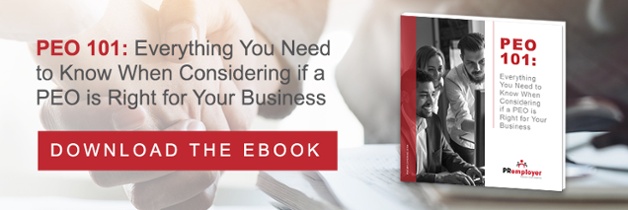
Co-employment confuses many executives and HR managers, who either don't know what it is or have picked up misconceptions about the arrangement. In this article, we will demystify this employment solution so that you can make a better decision about whether or not you should use it.
According to NAPEO, the National Association of Professional Employer Organizations, co-employment is an arrangement between a professional employer organization (PEO) and a client that is governed by a contract that delineates the responsibilities of the two parties. Typically, the PEO handles wages, payroll, reporting, and similar duties.
What PEO Co-Employment is NOT
It's not Joint Employment
Co-employment with a PEO is not a joint employer relationship. In joint employment, a company has direct and immediate control over another company's workers. Both companies control the work and working conditions of the employees, making them joint employers under the law.
It's not Employee Leasing
One of the biggest misconceptions is that co-employment is the same as employee leasing. In reality, they are quite different from each other. With employee leasing, the staffing agency hires, assigns, and fires employees. Assignments also tend to have set dates.
With co-employment, the PEO handles some of the administrative aspects of HR, but does not hire or fire the employees. Those decisions are entirely up to the business owner.
What is an Employer of Record?
With co-employment, the employee technically has two employers. One is the client, who hires the employee and directs the work. The other is the PEO. Since the PEO is responsible for HR-related taxes and related requirements, it is the "employer of record" according to the law. This does not diminish the client's control over hiring, firing, and job performance.
Co-Employment Lowers Your Liability
Since the PEO is the employer of record for legal purposes, it takes on the duties and risks associated with HR-related regulatory compliance. It handles the classification of employees according to the Fair Labor Standards Act and other regulations (determining if a worker is a standard employee, exempt employee, independent contractor, or other). The PEO also handles filing W2s and W4s, paying employment taxes, and maintaining all of the relevant records in a secure way.
Co-Employment Lowers Your Health Insurance Premiums
Corporate health insurance is based mostly on the number of people insured, also known as the "pool" of insured. Smaller companies have fewer employees to cover, so their premiums are higher. When they hire a PEO, however, their employees join the pool of all of the others under the PEO umbrella. Thanks to the larger pool, premiums drop – sometimes greatly.
Co-Employment Attracts Top Talent
Many people choose a job, or decide to stay at their current job, in order to get better health benefits. The lower premiums gained by working with a PEO allow you to offer a robust benefits package that attracts and retains the best talent at your company.
According to a survey by Randstad, 75 percent of employees put health benefits as their most important perk. Retirement funds and pensions were next in line, and the cost savings that come from working with a PEO will allow you to improve these, as well.
Co-Employment Lowers Administrative Burden
The management of payroll goes far beyond cutting checks. It requires the timely filing of many types of forms, keeping up with changes in employees' personal status, and more. This eats up hours of your HR department's time. When the HR person doing this work is at or above the managerial level, that time is especially expensive.
When the confusion about co-employment is cleared up, the benefits are obvious. Co-employment reduces risk, lowers administrative burdens, and attracts top talent through improved benefits – all while allowing the business owner to maintain control over the working relationship.

